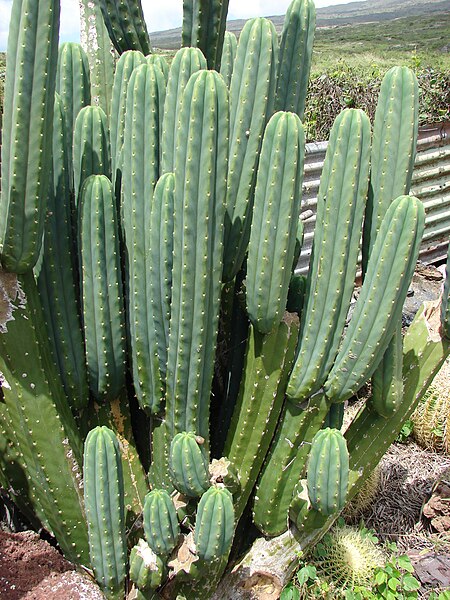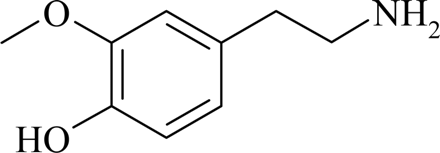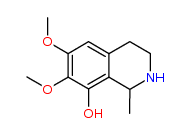Trichocereus pachanoi Britton & Rose
 Synonyms
Synonyms (
Tropicos.org)
Cereus pachanoi (Britton & Rose) Werderm.
Echinopsis pachanoi (Britton & Rose) Friedrich & G.D. Rowley
Trichocereus macrogonus var. pachanoi (Britton & Rose) Albesiano & R. Kiesling
Herbarium Botanical Voucher: Link
Distribution South America, Andes.
Botanical description...
Ethnomedicinal use...
Alkaloid/Chemical content: (mostly from
Trout's Cactus Chemistry book)
93.5% water by weight according to Poisson 1960.
95.5% water by weight (Reyna & Flores 2001)
Mescaline. Highly variable.
- 0.310% fresh weight (Gennaro et al. 1996)
- 0.12% fresh (Poisson 1960. Collected in Peru)
- 0.067 - 0.079% fresh: (Bruhn & Lundström 1976a)
- 0.04% fresh (Agurell 1969a)
- 0.025% fresh (Agurell 1969b)
- 4.7% Dry outer green tissues. (Ogunbodede et al. 2010) Harvested at Matucana in Peru.
- 4.5% - Dry outer tissue (Gonzales Huerta 1960)
- 2.375% - 0.109% dry (Helmlin & Brenneisen 1992)
- 2.0 % dry(Poisson 1960)
- 0.94% dry green outer tissue (Cjuno et al 2009) Tocmoche, Chota, Cajamarca, Peru
- 0.67% dry (Agurell 1969a)
- 0.45 dry green outer tissue (Cjuno et al 2009)
- 0.38% dry green outer tissue (Cjuno et al 2009) Yanasara, Sánchez Carrión, La Libertad, Peru.
- 0.331% dry (Crosby & McLaughlin 1973)
- 0.15% dry (Pummangura et al. 1982a) Commercial cuttings propagated in California.
- 0% dry green outer tissues (Cjuno et al. 2009) Cataratas, Otuzco, La Libertad, Peru.
- 0% dry green outer tissues (Cjuno et al. 2009) El Alisal, San Marcos, Cajamarca, Peru
3,4-Dimethoxyphenethylamine - 0.005% - 0.0005% fresh Agurell 1969b [Obtained via European commercial sources]
3-Methoxytyramine- 0.005% - 0.0005% fresh Agurell 1969b;
- Under 0.01% fresh Agurell 1969a.
- 0.01% dry (Crosby & McLaughlin 1973 [Obtained via Californian commercial sources]
[Also reported in Agurell & Lundström 1968]
Anhalonidine - 0.01% of
alkaloid content (not of plant) Agurell 1969a
- (trace) Agurell 1969b
3-Hydroxy-4,5-dimethoxyphenethylamine (trace) Agurell 1969b
4-Hydroxy-3,5-dimethoxyphenethylamine (trace) Agurell 1969a and 1969b. Also reported in Agurell & Lundström 1968
Tyramine (trace) Agurell 1969a and Agurell 1969b
Hordenine (trace) Agurell 1969b
β-sitosterol (Flores 2000)
Unidentified
lactone-forming acid (tlc by Kringstad & Nordal 1975)
Aglycones isolated after acid or enzymatic hydrolysis of the isolated corresponding sapogenins:
Pachanols A & B, Bridgesigenins A, B & C (Kinoshita et al. 1995)
Alkaloid info and pharmacology Mescaline 
CAS: 54-04-6
211.257 g/mol
Half life: 6 hours (wikipedia)
Mescaline in the form of Peyote or San Pedro has been consumed for thousands of years. (El-Seedi et al 2005)
Metabolites: 3,4,5-trimethoxyphenylacetic acid; 3,4,5-trimethoxybenzoic acid; 3,4-dihydroxy-5-methoxy-phenyl-lacetyl glutamine; 3-hydroxy-4,5-dimethoxyphenylethylamine; N-acetylmescaline; and N-acetyl-3,4-dimethoxy-5-hydroxyphenylethylamine. (Dart 2004)
(......More pharmacology info)
3,4-Dimethoxyphenethylamine (DMPEA) 
CAS: 120-20-7
181.23 g/mol
In the book PiHKAL, Shulgin describes DMPEA as producing no central effects in humans when tested even with very high doses, such as 1,000 mg orally or 10 mg via intravenous injection. However, DMPEA has been shown to have some activity as a monoamine oxidase inhibitor (Keller & Ferguson 1977)
3-Methoxytyramine 
CAS: 554-52-9
167.21 g/mol
3-Methoxytyramine (3-MT), also known as 3-methoxy-4-hydroxyphenethylamine, is a metabolite of the neurotransmitter dopamine formed by the introduction of a methyl group to dopamine by the enzyme catechol-O-methyl transferase (COMT). 3-MT can be further metabolized by the enzyme monoamine oxidase (MAO) to form homovanillic acid (HVA), which is then typically excreted in the urine.
Originally thought to be physiologically inactive, 3-MT has recently been shown to act as an agonist of the TAAR1.( Sotnikova et al 2010)
Anhalonidine 
CAS Registry Number: 17627-77-9
CAS Name: 1,2,3,4-Tetrahydro-6,7-dimethoxy-1-methyl-8-isoquinolinol
Additional Names: 6,7-dimethoxy-8-hydroxy-1-methyl-1,2,3,4-tetrahydroisoquinoline
Molecular Weight: 223.27
Properties: Small octahedra from benzene, mp 160-161°. uv max (ethanol): 270 nm (log e 2.81). Strong base. Freely sol in water, alcohol, chlorofom, hot benzene. Sparingly sol in ether. Insol in petr ether. Solns of anhalonidine acquire a reddish color on standing.
Melting point: mp 160-161°
Absorption maximum: uv max (ethanol): 270 nm (log e 2.81)
Anhalonidine in man appears to act in a manner parallel to peyotline (leading to a heavy-headedness and sedation) but with only about one-fourth the potency. At oral levels of between 100 and 250 mg there was a marked sedation, but no sensory changes whatsoever (Shulgin 1972)
Bridgesigenins B, C and Pachanol C
(different modifications on the numbered Rs in each of the mentioned substances)
KINOSHITA et al. 1998 established antinociceptive activity in rodents for Bridgesigenins B & C and for Pachanol C. This means it could present analgesia and/or an antiinflammatory action and/or a decrease in activity/responsiveness and/or a psychological impairment.
Analysis DataGC-MS spectra
TLC system: ?
Plant vendors:?
DMT Nexus related threads: ?
Sources:
El-Seedi HR, De Smet PA, Beck O, Possnert G, Bruhn JG (October 2005). "Prehistoric peyote use: alkaloid analysis and radiocarbon dating of archaeological specimens of Lophophora from Texas". J Ethnopharmacol 101 (1–3): 238–42
Keller WJ, Ferguson GG (July 1977). "Effects of 3,4-dimethoxyphenethylamine derivatives on monoamine oxidase". Journal of Pharmaceutical Sciences 66 (7): 1048–50
Sotnikova TD, Beaulieu JM, Espinoza S, et al. (2010). "The dopamine metabolite 3-methoxytyramine is a neuromodulator". Plos One 5 (10): e13452
Shulgin. Mescaline: The Chemistry and Pharmacology of its Analogs (1972)[Dart, R.C. (ed). Medical Toxicology. Third Edition, Lippincott Williams & Wilkins. Philadelphia, PA. 2004., p. 1706]